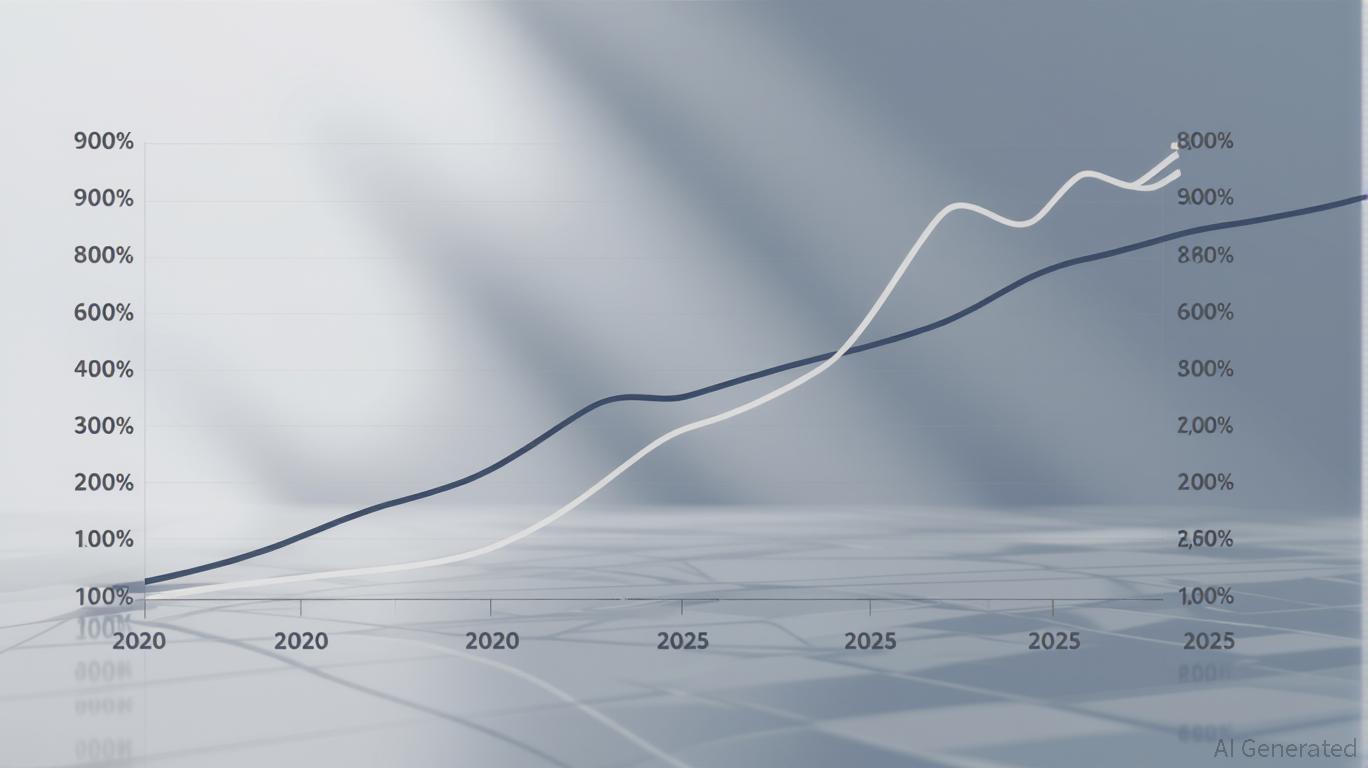Navigating Macroeconomic Shifts: Capital Allocation Strategies in a Volatile Investment Environment
The current investment landscape is defined by a precarious balance between inflationary pressures, policy uncertainty, and geopolitical risks. With the Federal Reserve's rates anchored at 4.25%–4.5%, global growth unevenly distributed, and equity markets oscillating between record highs and volatility spikes, investors must calibrate their portfolios to withstand—and exploit—these crosscurrents. This article examines how macroeconomic signals can guide capital allocation between risky assets (equities, corporate bonds) and risk-free assets (government bonds, cash), emphasizing flexibility and foresight in an environment where no single asset class offers unassailable safety.
Inflation: The Lingering Catalyst
The Fed's inflation target of 2% remains elusive, with headline inflation at 3.0% as of mid-2025. However, the dynamics are shifting: shelter costs, which have driven 60% of recent inflation, are now moderating, while core inflation (excluding food and energy) has lingered below 2% for most of the past two years. This divergence suggests that inflation is becoming less broad-based and more tied to specific sectors.

For investors, this means two things: First, the Fed's patience in waiting for inflation to settle before cutting rates is justified, but markets may continue to price in gradual easing. Second, sectors like housing or energy—previously inflated by supply constraints—could face corrections as prices normalize.
Fed Policy: Between a Rock and a Hard Place
The Federal Reserve's dilemma is clear: maintaining high rates to anchor inflation expectations risks stifling growth, while cutting rates prematurely could reignite price pressures. Internal divisions at the Fed reflect this tension: seven officials oppose any cuts this year, while markets price in two by year-end.
The implications for investors are profound. Bond yields, which have fluctuated between 3.8% and 4.6% for the 10-year Treasury, are likely to remain range-bound unless inflation surprises to the upside or downside. A
would reveal the narrowing gap between bond returns and equity valuations, a critical metric for asset allocation.If yields decline further—a plausible scenario if the Fed relents—long-duration bonds could outperform, but only if rate cuts materialize. Conversely, a hawkish pivot would penalize bonds while testing equity resilience.
Growth: A Fragile Rebound
The U.S. economy contracted 0.5% in Q1-2025, a result of tariff-driven import surges, but is projected to rebound to 2.9% in Q2. Emerging markets, however, face headwinds: their growth is expected to slow to 2.4% in H2, hampered by U.S. trade policies and capital flight. This divergence underscores a key strategy: overweight equities in developed markets (particularly those with pricing power or secular tailwinds) while underweighting EM equities until policy clarity emerges.
The S&P 500's record highs since Q2—despite geopolitical flare-ups like the Israel-Iran conflict—highlight investors' willingness to overlook near-term risks for long-term gains. Yet, a
reveals that market calm has coincided with diplomatic resolutions, suggesting volatility could resurge if geopolitical tensions reignite.Capital Allocation: A Pragmatic Approach
To navigate these crosscurrents, investors should prioritize:
Equity Exposure with Selectivity:
Focus on sectors insulated from inflation and trade disruptions, such as technology (e.g., cloud infrastructure, cybersecurity) and consumer staples. Avoid cyclical industries (autos, industrials) unless growth accelerates meaningfully.Bond Duration Management:
Shorten bond durations to mitigate interest rate risk. High-quality short-term Treasuries or inverse rate ETFs (e.g., TBF) can hedge against Fed uncertainty.Emerging Markets Caution:
Avoid EM equities until their central banks begin cutting rates (a trend likely delayed until the Fed signals easing). Instead, consider U.S. multinationals with strong EM revenue exposure but U.S. dollar earnings.Cash as a Strategic Tool:
Maintain 5–10% in cash or short-term deposits to capitalize on volatility-driven dislocations.
Risks and Conclusion
The primary risks lie in the Fed's policy missteps: an abrupt inflation rebound could force rates higher, while a premature rate cut might destabilize bond markets. Geopolitical risks—trade wars, energy supply disruptions—remain wildcards.
In this environment, investors must avoid binary bets. A diversified portfolio tilted toward equities (40–50%), with 20–30% in short-term bonds and 10–20% in cash, offers a balanced approach. Risk tolerance should dictate the aggressiveness of this allocation, with younger investors leaning more into equities and retirees favoring bonds.
The key lesson is clear: macroeconomic signals are not predictions but guides. By monitoring inflation trends, Fed communications, and geopolitical developments, investors can dynamically adjust their allocations to weather volatility—and seize opportunities when others falter.
Sign up for free to continue reading
By continuing, I agree to the
Market Data Terms of Service and Privacy Statement

Comments
No comments yet